Location: Futian District, Shenzhen, China
Type: cultural district, museum park, landscape concept design
Status: "Excellent Prize", Top 3 Finalist Award
Year: 2021
Organizer: Bureau of Public Works of Futian District, Shenzhen
Team: JKMM Architects, AUBE and Barker Langham, Nomaji Landscape Architects
Collaborators: Futudesign, Kvant-1, Mir, SAN and Artist Pan Jianfeng
The result of the competition, published at the end of September, placed the competition proposal “Foundation Stone Garden” in the second place in the International Competition for Shenzhen Antuo Hill Museums. Nomaji was part of the team, collaborating with JKMM Architects. You can find more details about the competition results here.
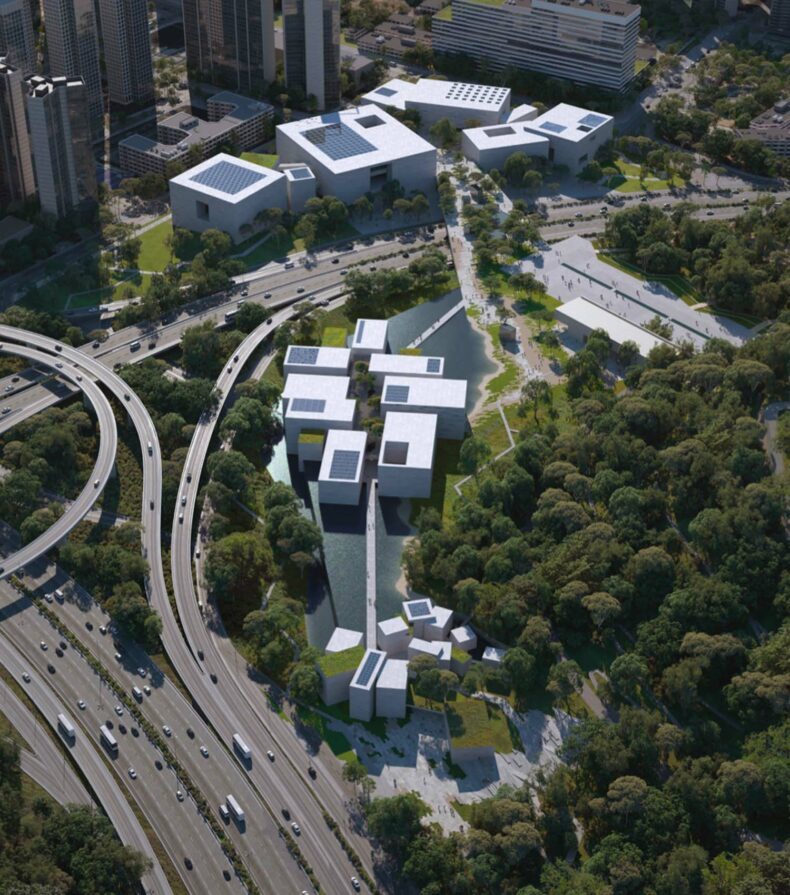
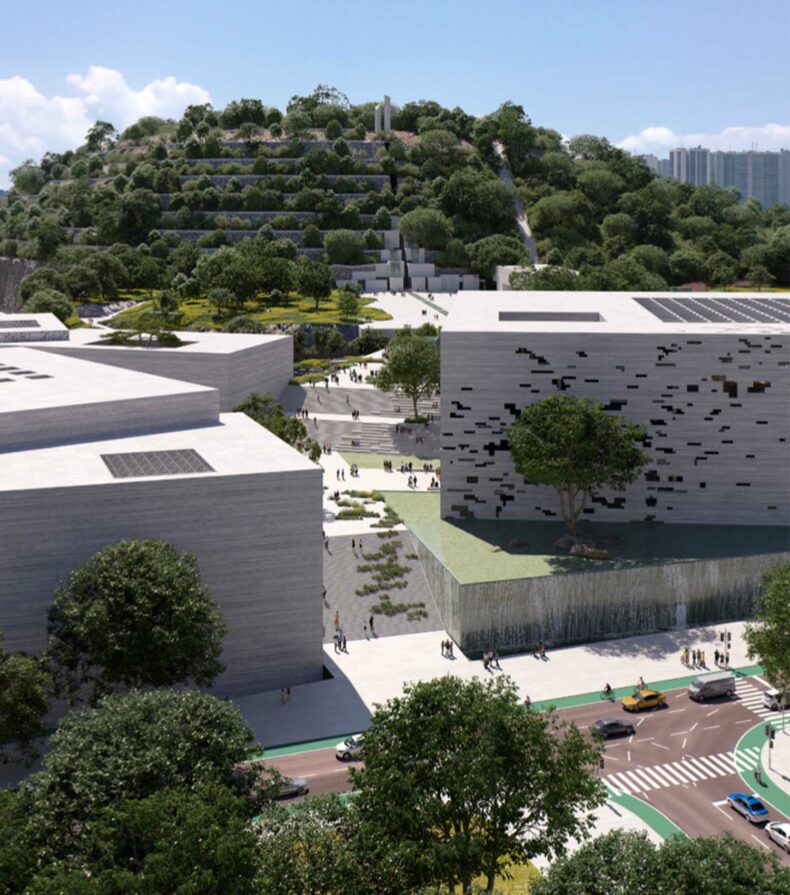
Shenzhen Antuo Hill Museums (SAHM) is located on the southeast coast of China. It is positioned as a public cultural facility and an ecological community of museums. The planned site was 214,000 m2 in size and is located at the natural passage from Tanglangshan Mountain to Shenzhen Bay and at the central node of the east-west axis of Shenzhen city.
The starting point for the design was the history of the surrounding quarry and the local nature and native species of the Antuo Hills mountains, which are widely left around the mountains.
The museum park consist of garden patches of various sizes along the main path. The Gardens, each having a unique theme, reflect the versatile relationship of man with nature and provide visitors changing experiences throughout the seasons. Within the area visitors can meet unique urban nature and aesthetic experiences interlinked by the main path. Simultaneously the gardens with their diverse vegetation connect the area to be part of the surrounding landscape and green and blue.
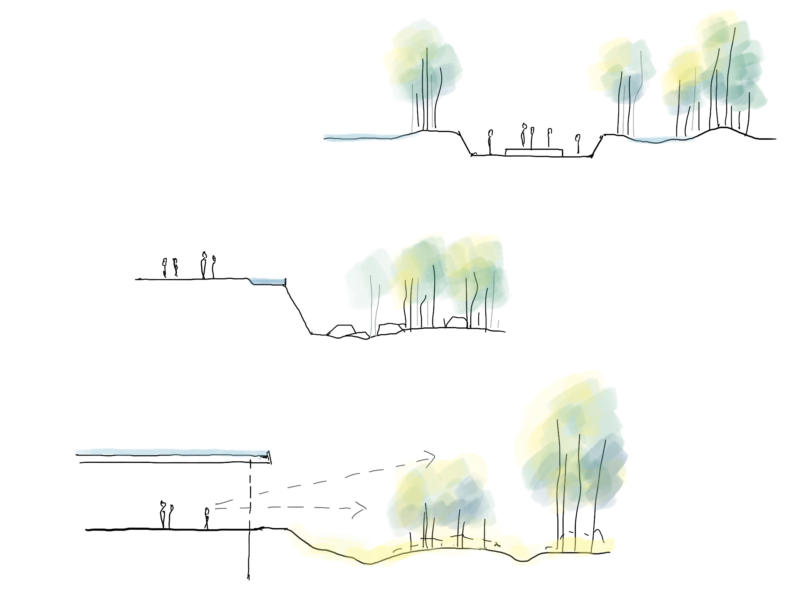
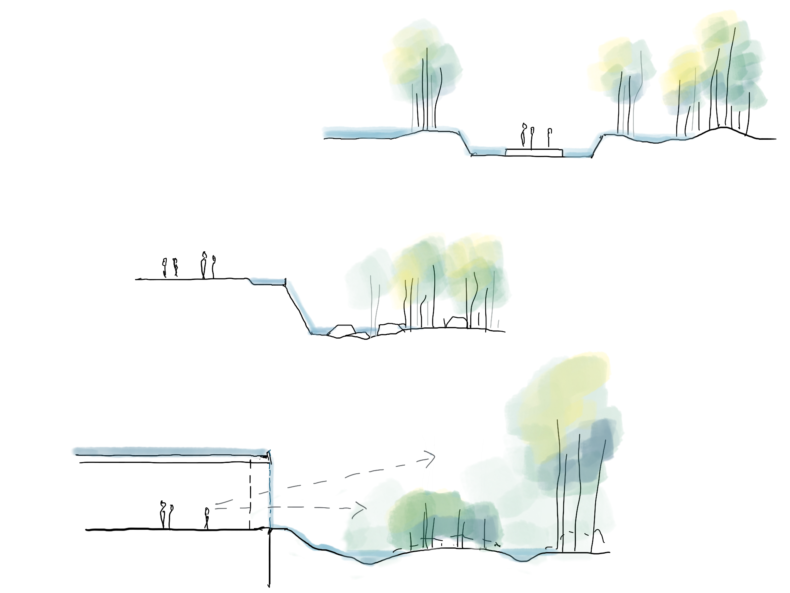
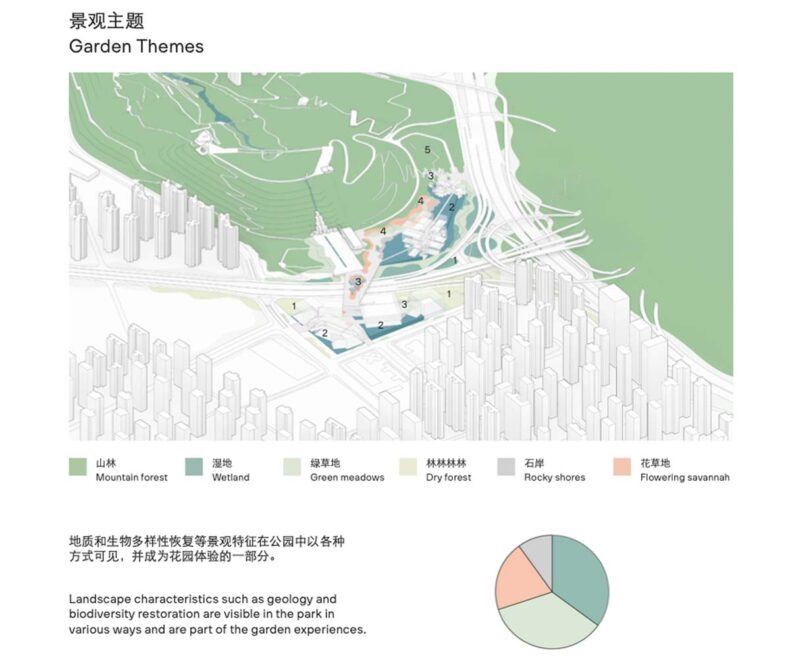
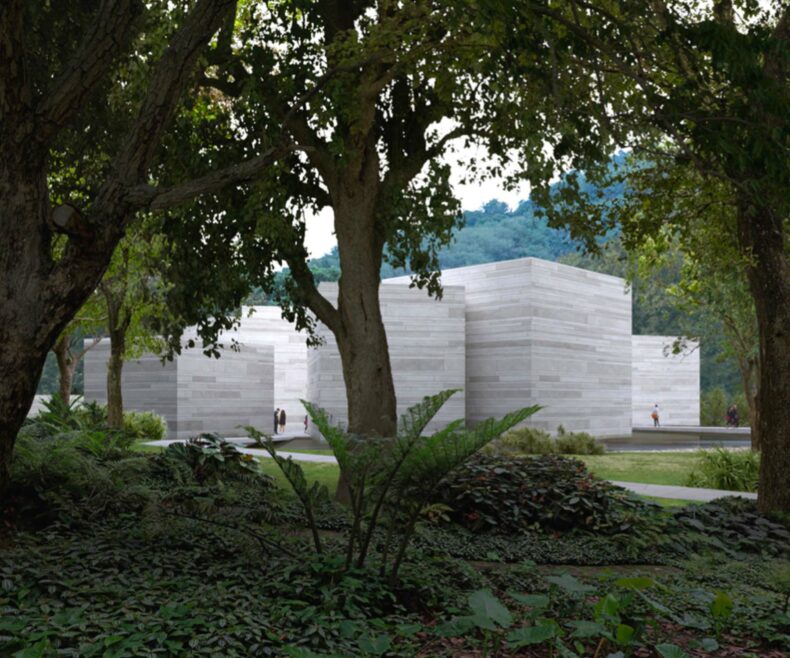

The continuous movement of water is the core of the blue landscape. Water is the ele¬ment of life and it accompanies the visitor through the entran- ce of the museums. Grand water falls and mirrors reflecting the sky set the mood for grand experience of art and culture.
Water is both as an esthetic and functional part of the design. Water makes seasonal changes visible in the area and improves the microclimate. Flowing water is also an important part of the soundscape, creating a sense of enclosure for the site. Mirror pools, ponds and water channels have been integrated in the garden design, in the buildings and along the main path. During the rainy season in turn, the whole area turns step by step into a water landscape, while the water floods into the designed water channels and streams, down the waterfalls and ends up to the nature-based retention areas.
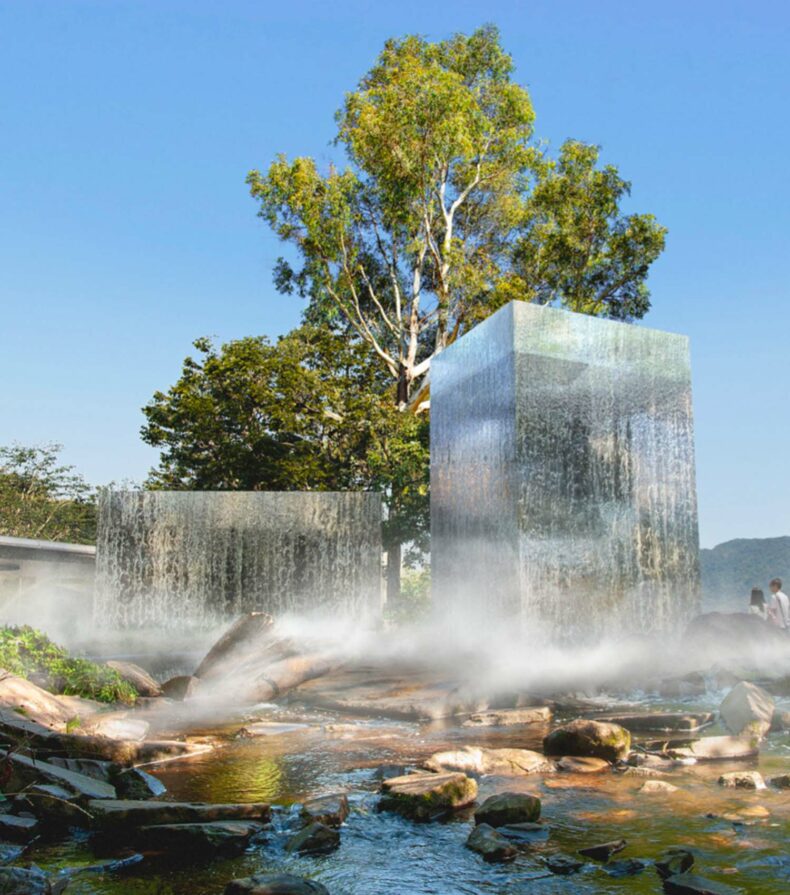
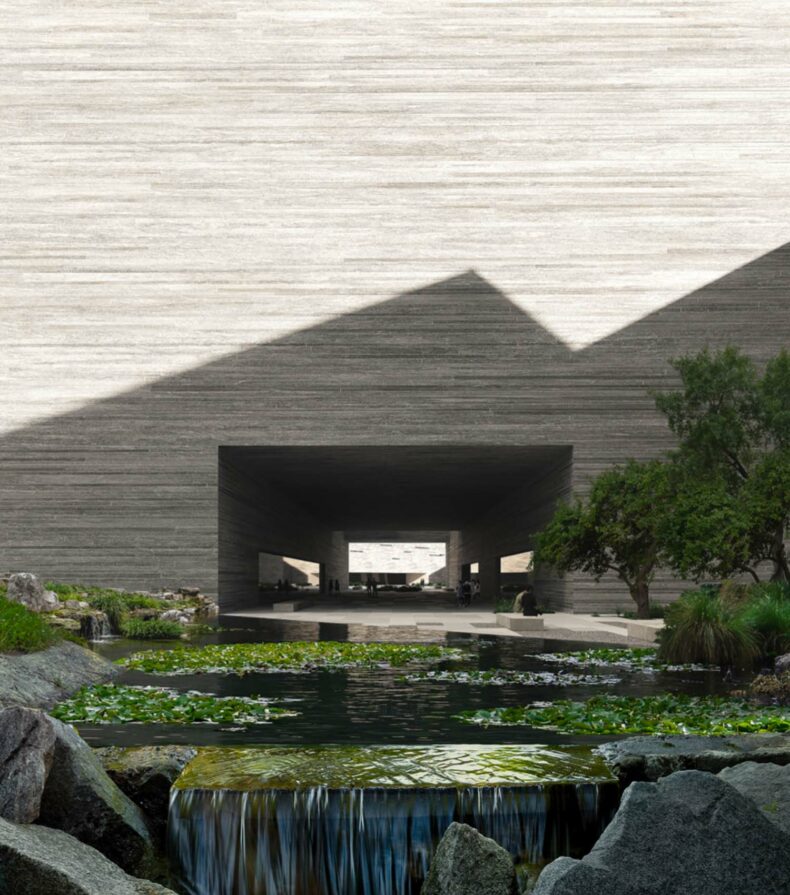
The Antuo Hills museum area provides a platform for diverse cultural activities, combining local cultural heritage and art. The environment reinforces visitors ’experience of the proximity of the surrounding nature and native species as part of the urban environment. Inside the giant “Stones”, incredible spaces are created to lead us to unveil the wonderful cultural world, in connection with nature.
Visualizations © KVANT-1 and © MIR.
